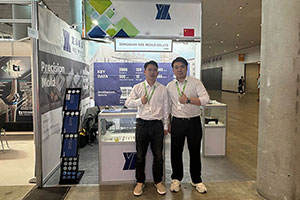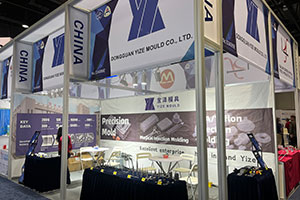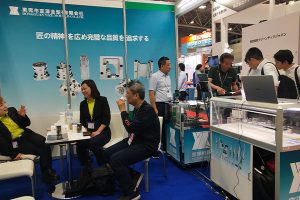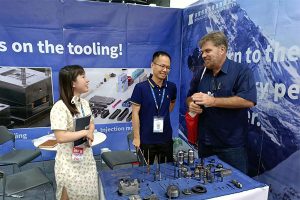Stability Assurance of Tungsten Carbide Dies in High-Speed Cutting
I. Introduction: Core Challenges in High-Speed Cutting and Tungsten Carbide Die Stability In the context of manufacturing’s shift toward high efficiency and precision, high-speed cutting technology has become a cornerstone […]
I. Introduction: Core Challenges in High-Speed Cutting and Tungsten Carbide Die Stability
In the context of manufacturing’s shift toward high efficiency and precision, high-speed cutting technology has become a cornerstone of die manufacturing, offering over 30% improvements in processing efficiency and 50% reductions in surface roughness. Tungsten carbide dies, renowned for their hardness (HRA 89-93) and low thermal conductivity (1/3 that of steel), dominate high-speed cutting applications. However, when cutting speeds exceed 200 m/min, dies endure cutting forces exceeding 5,000 N and instantaneous temperatures of 800–1,000°C, leading to 40% increases in deformation and tripling wear rates. Stability issues have emerged as a critical bottleneck impeding industrial upgrading. This paper systematically constructs a stability assurance framework for tungsten carbide dies from material science, structural mechanics, and process optimization perspectives.
II. Material Selection and Treatment: Building the Foundation for Stability
(1) Precision Material Performance Matching
Material selection must satisfy three core requirements for high-speed cutting:
Unser Fabrikgeschäft: Hartmetallteile, Formteile, medizinische Spritzgussformen, Präzisionsspritzgussformen, Teflon-PFA-Spritzguss, PFA-Rohrverschraubungen. E-Mail: [email protected],whatsapp:+8613302615729.
- Thermal Stability: WC-Co-based cemented carbides with 6–12% cobalt content resist thermal softening up to 1,000°C.
- Abnutzungswiderstand: Adding TaC/NbC cubic carbides enhances wear resistance by 25%.
- Impact Resistance: Gradient structures with 0.5 μm surface WC grains and 2–3 μm core grains achieve fracture toughness of 12 MPa·m¹/².
(2) Composite Strengthening Technologies
- Heat Treatment: Vacuum sintering at 1,420°C followed by cryogenic treatment at -196°C reduces retained austenite to <3%.
- Surface Modification: PVD-deposited AlTiN coatings (35 GPa hardness) maintain thermal hardness up to 900°C.
- Stress Relief: Vibratory stress relief (VSR) decreases residual stress peaks by 40%, inhibiting microcrack propagation.
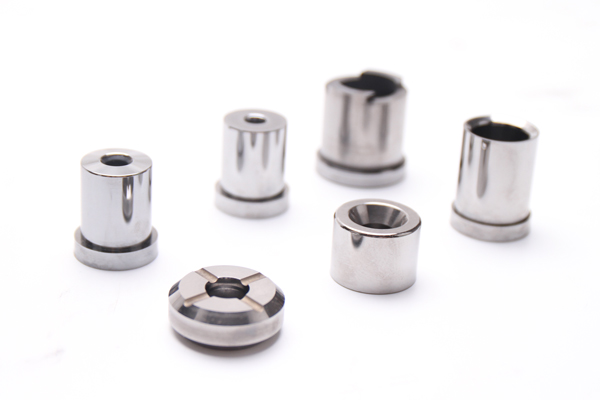
III. Structural Design Optimization: Synergy Between Mechanical Performance and Thermal Management
(1) Topology Optimization
Finite element analysis (FEA)-driven lightweighting strategies:
- Honeycomb-reinforced die cores improve stiffness by 35% while reducing weight by 20%.
- Spiral-expanding coolant channels enhance flow uniformity by 50%.
- Gradient wall thickness (1.5:1 ratio) reduces stress concentration factors by 60%.
(2) Thermo-Mechanical Coupling Compensation
- Pre-compensating for -0.02 mm/°C thermal expansion to counteract dimensional deformation.
- Laser-textured surfaces (0.1 mm depth) create micro-lubrication channels, lowering friction coefficients to 0.08.
- Dual-layer water cooling maintains temperature gradients <5°C/mm.
IV. Intelligent Cutting Parameter Control: Dynamic Equilibrium Strategies
(1) Parameter Optimization Model
A coupled force-temperature-vibration mathematical model guides parameter selection:
- Cutting Speed: Prioritize 80–120 m/min for minimal tool wear.
- Feed Rate: Employ variable feeds (0.1–0.15 mm/z)—aggressive initial cutting followed by precision finishing.
- Cutting Depth: For HRC50+ materials, adopt layered cutting with ≤0.5 mm/layer.
(2) Real-Time Monitoring System
A multi-sensor network enables closed-loop control:
- Triaxial dynamometers trigger speed reductions when Fz > 3,000 N.
- Infrared thermography activates coolant flow compensation above 700°C.
- Acoustic emission sensors provide 0.05 s advance warning of crack initiation.
V. Cooling-Lubrication System Innovation: Thermal Barrier Breakthroughs
(1) Nanofluid Cooling Technology
0.5 vol% Al₂O₃ nanofluids offer:
- Thermal conductivity of 0.8 W/(m·K) (3× traditional emulsions).
- Extreme pressure performance of 800 N (40% improvement).
- Biodegradability >90% with eco-friendly additives.
(2) Smart Spray Control
Pulsed spray systems integrate:
- Dynamic coolant adjustment based on thermal mapping (30% energy savings).
- 30° angled nozzles creating helical lubrication films.
- Microfiltration enabling >95% coolant recycling rates.
VI. Conclusion: Value Realization Through Systemic Solutions
The synergistic innovation across materials, structures, processes, and equipment has transformed tungsten carbide die stability in high-speed cutting:
- Die lifespan extended to 2.5× original, reducing per-part costs by 35%.
- Processing precision improved to ±0.005 mm, meeting aerospace die requirements.
- Overall equipment effectiveness (OEE) increased by 22%, advancing toward “lights-out” manufacturing.
Future research should focus on digital twin applications for die stability prediction and AI-driven adaptive parameter optimization systems to further empower high-end equipment manufacturing.


